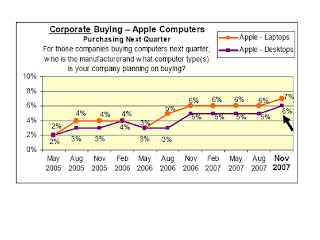
If Operating Systems Ran The Airlines...
UNIX Airways
Everyone brings one piece of the plane along when they come to the airport. They all go out on the runway and put the plane together piece by piece, arguing non-stop about what kind of plane they are supposed to be building.
Air DOS
Everybody pushes the airplane until it glides, then they jump on and let the plane coast until it hits the ground again. Then they push again, jump on again, and so on...
Mac Airlines
All the stewards, captains, baggage handlers, and ticket agents look and act exactly the same. Every time you ask questions about details, you are gently but firmly told that you don't need to know, don't want to know, and everything will be done for you without your ever having to know, so just shut up.
Windows Air
The terminal is pretty and colourful, with friendly stewards, easy baggage check and boarding, and a smooth take-off. After about 10 minutes in the air, the plane explodes with no warning whatsoever.
Windows NT Air
Just like Windows Air, but costs more, uses much bigger planes, and takes out all the other aircraft within a 40-mile radius when it explodes.
Windows XP Air
You turn up at the airport,which is under contract to only allow XP Air planes. All the aircraft are identical, brightly coloured and three times as big as they need to be. The signs are huge and all point the same way. Whichever way you go, someone pops up dressed in a cloak and pointed hat insisting you follow him. Your luggage and clothes are taken off you and replaced with an XP Air suit and suitcase identical to everyone around you as this is included in the exorbitant ticket cost. The aircraft will not take off until you have signed a contract. The inflight entertainment promised turns out to be the same Mickey Mouse cartoon repeated over and over again. You have to phone your travel agent before you can have a meal or drink. You are searched regularly throughout the flight. If you go to the toilet twice or more you get charged for a new ticket. No matter what destination you booked you will always end up crash landing at Whistler in Canada.
OSX Air:
You enter a white terminal, and all you can see is a woman sitting in the corner behind a white desk, you walk up to get your ticket. She smiles and says "Welcome to OS X Air, please allow us to take your picture", at which point a camera in the wall you didn't notice before takes your picture. "Thank you, here is your ticket" You are handed a minimalistic ticket with your picture at the top, it already has all of your information. A door opens to your right and you walk through. You enter a wide open space with one seat in the middle, you sit, listen to music and watch movies until the end of the flight. You never see any of the other passengers. You land, get off, and you say to yourself "wow, that was really nice, but I feel like something was missing"
Windows Vista Airlines:
You enter a good looking terminal with the largest planes you have ever seen. Every 10 feet a security officer appears and asks you if you are "sure" you want to continue walking to your plane and if you would like to cancel. Not sure what cancel would do, you continue walking and ask the agent at the desk why the planes are so big. After the security officer making sure you want to ask the question and you want to hear the answer, the agent replies that they are bigger because it makes customers feel better, but the planes are designed to fly twice as slow. Adding the size helped achieve the slow fly goal.
Once on the plane, every passenger has to be asked individually by the flight attendants if they are sure they want to take this flight. Then it is company policy that the captain asks the passengers collectively the same thing. After answering yes to so many questions, you are punched in the face by some stranger who when he asked "Are you sure you want me to punch you in the face? Cancel or Allow?" you instinctively say "Allow".
After takeoff, the pilots realize that the landing gear driver wasn't updated to work with the new plane. Therefore it is always stuck in the down position. This forces the plane to fly even slower, but the pilots are used to it and continue to fly the planes, hoping that soon the landing gear manufacturer will give out a landing gear driver update.
You arrive at your destination wishing you had used your reward miles with XP airlines rather than trying out this new carrier. A close friend, after hearing your story, mentions that Linux Air is a much better alternative and helps.
Linux Air
Disgruntled employees of all the other OS airlines decide to start their own airline. They build the planes, ticket counters, and pave the runways themselves. They charge a small fee to cover the cost of printing the ticket, but you can also download and print the ticket yourself.
When you board the plane, you are given a seat, four bolts, a wrench and a copy of the seat-HOWTO.html. Once settled, the fully adjustable seat is very comfortable, the plane leaves and arrives on time without a single problem, the in-flight meal is wonderful. You try to tell customers of the other airlines about the great trip, but all they can say is, "You had to do what with the seat?"







